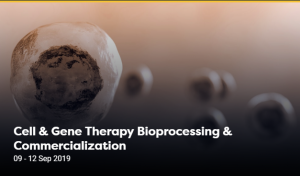The success of gene therapy depends on…diagnostic testing

By David Parker, PhD, Senior VP, Diagnostics Solutions, Precision for Medicine
In recent years, gene therapy has begun to realize its expected promise. While the term is used to encompass a variety of treatment modalities—ex vivo cell modification, nucleic acid therapeutics such as si-RNAs, gene replacement regimens—it is the last one that offers the greatest possibility of actual cures for otherwise intractable diseases. Gene replacement therapies are aimed at treating monogenic inherited diseases by replacing the lost or diminished function of defective genes with replacement genes capable of producing fully active proteins.
Because of the intensive research and development needed to create a gene therapy, and the relatively small patient population suitable for one, the cost of such therapies is extremely high. While much has been made of this cost and the high-technology nature of gene replacement therapies, it is little recognized that their success depends on the appropriate application of one or more specialized diagnostic tests. Diagnostic testing is initially required to identify appropriate candidates for the gene therapy—patients with the specific defective gene that the therapy would replace. If the therapy depends on successful delivery through a viral vector, another test is needed to assess whether the patient has “neutralizing” antibodies to the vector that would render the treatment ineffective before the genetic payload could be delivered.
Because of the exquisitely specific nature of gene replacement therapies, clinical presentation by itself often is inadequate to identify a potential candidate, and a more definitive test is needed. For example, Spark Therapeutics has developed Luxturna™ for treatment of patients with confirmed biallelic RPE65 mutation-associated retinal dystrophy1 . This condition is one of a group of inherited retinal diseases including Stargardt’s disease, Choroideremia, and Best’s disease2 . Because symptoms in this group of diseases overlap, genetic testing is required to determine whether a symptomatic patient is in fact a candidate for Luxturna™ treatment3.
Many in vivo gene therapies employ viral vectors to deliver the nucleic acid comprising the actual therapy into cells where it can be expressed. These vectors are selected from among well-characterized human viruses for their ability to infect human cells, and a group of viruses called adeno-associated viruses (AAVs) have proven to be well suited to the task because of their low pathogenicity. However, some people previously exposed to the endemic version of AAV will have developed antibodies to the virus; those same antibodies may bind to the AAV vector and neutralize it4. Therefore, testing candidate patients for the presence of these “neutralizing antibodies” can identify patients in whom an otherwise suitable gene therapy may prove ineffective.
 | Cell and Gene Therapy Bioprocessing and Commercialization is taking place in Boston on September 9-12, 2019. Explore the agenda here. | |
|---|---|---|
It stands to reason that if the therapeutic and commercial success of a gene replacement therapy depends on such diagnostic tests, then ensuring access to the tests is a critical requirement for appropriate access to the treatment. Achieving that goal is not as straightforward as it seems, however, because these diagnostics are not routinely available laboratory tests. Clinical testing laboratories generally prefer to offer high-volume tests that provide economies of scale and are amenable to automation. In particular, laboratories are reluctant to offer tests with uncertain reimbursement. Unfortunately, patient-identifying genetic tests and neutralizing antibody tests are technically demanding, low-volume tests that do not easily fit into the reimbursement system—precisely the kind of tests that laboratories are reluctant to take on.
In response to this access challenge, gene therapy developers are becoming directly involved in the financing of therapy-related diagnostics. In recent years it has become commonplace for biopharmaceutical companies developing targeted therapies to fund development of the companion diagnostic tests, to ensure their availability at the time of drug launch. While to date gene therapy developers have generally left it to payers to adequately reimburse the tests, they are now stepping in to pay not only for development of the tests, but also for the clinical testing itself.
An example is the Spark Therapeutics–sponsored RPE65 Genetic Test Program5 for Luxturna™. Spark has partnered with one or more independent genetic testing laboratories to provide genetic testing for biallelic RPE65 mutations. The testing service is provided free to potential candidates for Luxturna™ treatment, and Spark compensates the genetic testing laboratories adequately for providing a rare specialty genetic test. In another example, a developer of a gene therapy delivered via an AAV vector is pursuing a strategy with Precision for Medicine in which Precision will initially develop and provide a neutralizing antibody test for clinical trials. Precision will then continue to provide it as a clinical test, sponsored by the gene therapy company, after the therapy is launched.
Gene replacement therapy represents a major paradigm change in the treatment of genetic diseases, enabled by extraordinary research and clinical innovation. Its feasibility as a practical treatment will be facilitated by specialized diagnostic testing, which will require the same commitment to innovation in ensuring access.
RELATED ARTICLE: Gene therapy is revolutionizing healthcare, but can we revolutionize payment models in time to keep up?
1. Luxturna ™ Package Insert.
2. https://www.fda.gov/downloads/BiologicsBloodVaccines/CellularGeneTherapyProducts/ApprovedProducts/UCM589541.pdf. Accessed April 17, 2019.
3. Duncan, JL, et al. Transl Vis Sci Technol. 2018; Jul; 7(4): 6.
Stone EM. et al. Ophthalmology 2017; 124(9): 1314.
4. Halbert CL et al. Hum Gene Ther. 2006; 17(4): 440.
5. https://luxturna.com/genetic-test-terms-and-conditions/ Accessed April 17, 2019